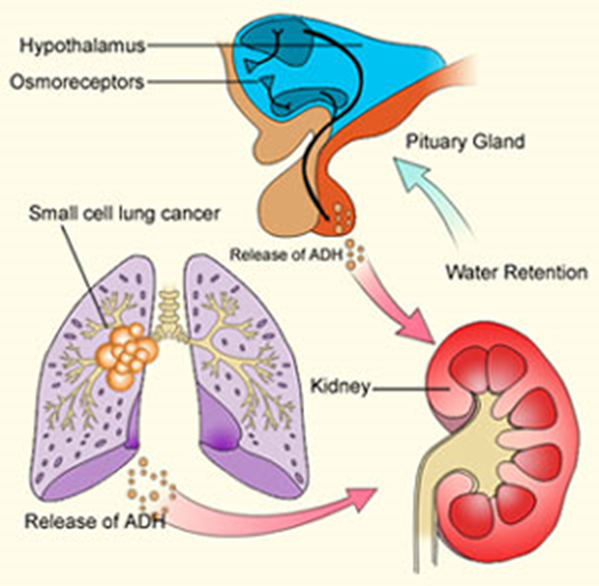A nurse is providing care for a client diagnosed with diabetic ketoacidosis (DK
Exercise
Elevation of legs
Intermittent pneumatic compression pumps
Ankle-brachial index test
Layered wraps
Correct Answer : A,B,C,E
Choice A reason: Exercise
Exercise is a crucial component in the management of peripheral venous disease (PVD). Regular physical activity helps improve blood circulation and reduces symptoms such as pain and swelling. Walking, in particular, is highly recommended as it promotes venous return and enhances overall cardiovascular health. Exercise also helps in weight management, which can alleviate the pressure on the veins and improve symptoms of PVD.
Choice B reason: Elevation of Legs
Elevating the legs is a simple yet effective way to reduce swelling and improve blood flow in patients with PVD1. By raising the legs above the level of the heart, gravity helps to reduce the pooling of blood in the lower extremities, thereby decreasing edema and discomfort. This practice is especially beneficial when done regularly, such as during rest periods or while sleeping.
Choice C reason: Intermittent Pneumatic Compression Pumps
Intermittent pneumatic compression (IPC) pumps are devices used to enhance blood flow in the legs. These devices consist of inflatable sleeves that wrap around the legs and periodically inflate and deflate, mimicking the natural muscle contractions that help push blood back toward the heart. IPC pumps are particularly useful for patients who are immobile or have difficulty engaging in physical activity, as they help prevent blood clots and reduce swelling.
Choice D reason: Ankle-Brachial Index Test
The ankle-brachial index (ABI) test is a diagnostic tool used to assess the severity of peripheral artery disease (PAD), not peripheral venous disease. The test compares the blood pressure in the ankle with the blood pressure in the arm to determine the presence of arterial blockages. While the ABI test is important for diagnosing PAD, it is not a treatment or management strategy for PVD. Therefore, it is not included in the plan of care for PVD.
Choice E reason: Layered Wraps
Layered wraps, also known as compression bandages, are used to manage symptoms of PVD by providing consistent pressure to the legs. These wraps help reduce swelling, improve venous return, and prevent the formation of ulcers. Compression therapy is a cornerstone in the management of chronic venous insufficiency and related conditions, making layered wraps an essential part of the care plan for patients with PVD.
Nursing Test Bank
Naxlex Comprehensive Predictor Exams
Related Questions
Correct Answer is A
Explanation
Choice A Reason:
A history of myocardial infarction (heart attack) and the need for stent placement are significant risk factors for developing atrial flutter. Atrial flutter is often associated with structural heart disease, including coronary artery disease, which can lead to myocardial infarction. The damage to the heart muscle and the changes in the heart’s electrical system following a myocardial infarction can predispose a person to atrial flutter.
Choice B Reason:
While a family history of atrial flutter can indicate a genetic predisposition to arrhythmias, it is not as strong a risk factor as having a history of myocardial infarction and stent placement. Genetic factors can play a role, but they are typically less influential compared to direct cardiac events.
Choice C Reason:
Recovering from an illness that caused vomiting and diarrhea is not a direct risk factor for atrial flutter. These conditions can lead to electrolyte imbalances, which might temporarily affect heart rhythm, but they do not typically cause atrial flutter.
Choice D Reason:
Increased stress can contribute to various health issues, including heart problems, but it is not a primary risk factor for atrial flutter. Chronic stress can exacerbate existing heart conditions, but it is not as significant a risk factor as a history of myocardial infarction.
Correct Answer is D
Explanation
Choice A reason:
Injections in the thigh are absorbed more slowly compared to the abdomen. The thigh is a common site for insulin injections, but it does not provide the fastest absorption rate. The absorption rate can be influenced by physical activity, as exercise can increase blood flow to the muscles, potentially speeding up insulin absorption. However, under normal conditions, the thigh is not the fastest site for insulin absorption.
Choice B reason:
Injections in the upper arm have a moderate absorption rate. The upper arm is another common site for insulin injections, but it is not the fastest. The absorption rate from the upper arm is generally faster than the thigh but slower than the abdomen. This site can be convenient for injections, especially for those who find it difficult to reach other areas.
Choice C reason:
Injections in the buttocks have the slowest absorption rate among the common injection sites. The buttocks are less commonly used for insulin injections due to the slower absorption rate and the difficulty some individuals may have in administering injections in this area. The high fat content in the buttocks slows down the absorption of insulin.
Choice D reason:
Injections in the abdomen provide the fastest absorption rate for insulin. The abdomen is the preferred site for many people with diabetes because it has a large surface area and is easy to access. The insulin injected into the abdominal area is absorbed quickly into the bloodstream, making it the most effective site for rapid-acting insulin. This is particularly important for managing blood sugar levels around meal times.

Whether you are a student looking to ace your exams or a practicing nurse seeking to enhance your expertise , our nursing education contents will empower you with the confidence and competence to make a difference in the lives of patients and become a respected leader in the healthcare field.
Visit Naxlex, invest in your future and unlock endless possibilities with our unparalleled nursing education contents today
Report Wrong Answer on the Current Question
Do you disagree with the answer? If yes, what is your expected answer? Explain.
Kindly be descriptive with the issue you are facing.
